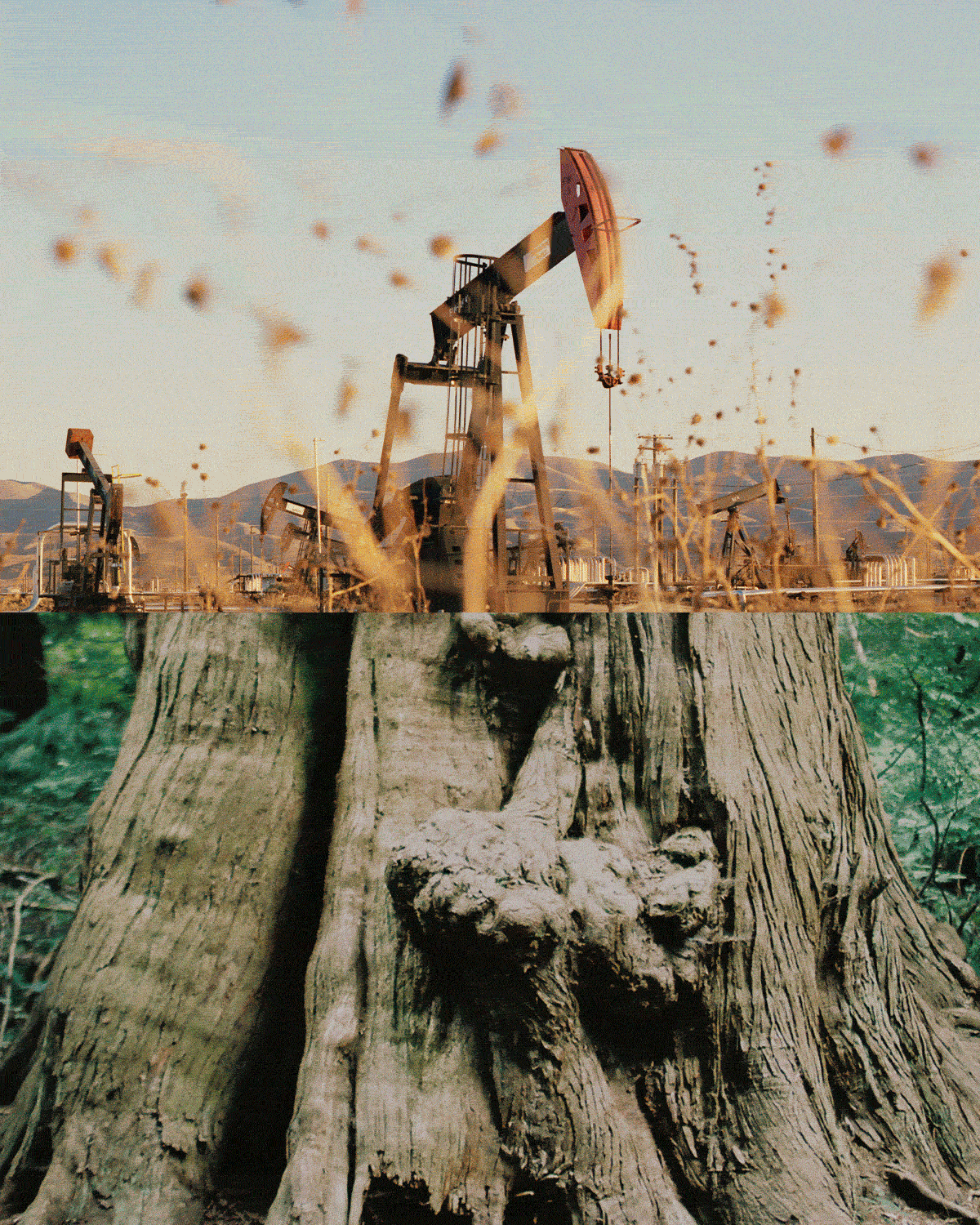
Photographs by Rachele Daminelli / Connected Archives, Ryan Molnar / Connected Archives, Pexels, Handout / Getty Images, Pool / Getty Images, Jingxuan Ji / IStock by Getty Images
words by miranda green
Let’s take a look at some headlines from the last week:
“Looming Treasury Rule Casts Pall Over Future of Renewables”
“Prices Are Rising, but Not for Oil and Gas”
“Hurricane Erin Strengthens to Category 5”
“Environmental Groups Sue Over D.O.E. Report Downplaying Climate Change”
Four headlines, four separate stories, all seemingly distinct. But with climate, that’s never really the case.
The stories are interconnected, with one leading to the outcome of another, collectively painting a picture of what is happening in the United States when it comes to climate policy—and what others are doing to push back.
The nuance can be hard to spot, especially when news feels overwhelming. Scanning headlines can feel like standing at the edge of a seven-lane highway, and every car whirring by is an ambulance going at full speed. There’s often a visceral desire to tune it out because all that’s happening around climate and the environment feels one directional, and worrisome.
And more and more people are tuning out. A growing number are selectively and consistently avoiding the news. According to Pew’s annual “Digital News Report”, traditional news media across the globe is struggling to connect with the public, resulting in declining engagement and trust. Younger respondents are more likely to say they feel powerless in the face of existential issues like climate change. This is despite the fact that a record-high number of Americans (48%) call global warming a serious threat.
Climate news in the U.S. can feel like an onslaught. In just the past few months, the Trump administration has:
● Reversed a ban on drilling in Alaska
● Made it harder for wind and solar projects to claim tax breaks
● Moved to end a solar program for low-income households
● Repealed the EPA’s landmark ‘endangerment finding’ that allows climate regulation
But by only reading headlines and breaking news alerts, you’re just getting part of the story. Beneath the surface there’s a connective tissue, an understory.
And by not seeing the full picture, you miss the context, the solutions, and sometimes the magic.
There’s a thread that binds all political news. Like the understory of a forest, composed of vegetation beneath the main canopy, the throughline of history and politics is the result of events and choices that largely occur below the surface of the day’s headlines. Taken as a whole, while news events can ebb and flow, they grow on top of one another, outward like the rings of a tree, part of the same long, collective timeline. Federal and state policy decisions and politics are cyclical; sometimes repeating, strengthening, or weakening. They wax and wane with new presidents, congresses, wars—even pandemics. But if you pay attention, you can also see incremental change. There’s some bad, often lots of discouragement, but also enlightenment.
I saw this firsthand when covering Congress and the White House as a political reporter at CNN and The Hill during Trump’s first presidency in Washington, D.C.
As the EPA moved to strip science advisors from committees, watchdog groups like PEER set up whistleblower hotlines.
As the Interior Department made it harder for reporters to file Freedom of Information Act requests, the Center for Biological Diversity led lawsuits.
When Trump announced he would withdraw from the Paris Climate Accords, California sent Gov. Jerry Brown instead, vowing to lead where the president wouldn’t.
Even now, as Trump’s One Big Beautiful Bill rolls out after being signed into law on July 4, the League of Conservation Voters is launching a $4 million campaign across swing states to use the tax bill to sour voters on Republicans ahead of next year’s midterm elections.
As environmental regulations are weakened and programs see massive cuts, there are often counter balances occurring, both nationally and locally.
The goal of this newsletter is to incorporate this understanding and take a look at some of the biggest climate policy and political issues through a lens of time.
The Understory aims to highlight the week’s biggest climate, energy, and environmental news by connecting the dots, offering context, explaining how the system works, and spotlighting solutions or opportunities to get involved. When the news cycle moves on, we’ll stay focused on the big picture. We’ll dive into how policy announcements matter, who they impact most, and who is doing something about it.
I learned two important realities during my time in D.C.:
The daily press often didn’t have the bandwidth to follow stories past breaking news or report how federal policies were impacting real people—nor what was being done in communities to counter it. (It’s the reason I quit my job and after 11 years in D.C. moved to Los Angeles to cover the real-time impacts of climate change.)
I also learned that every action has a reaction, and the White House’s climate policy changes don’t exist in a vacuum. For every bill, policy change, or budget cut, there are outside groups, philanthropies, businesses, lawyers, environmentalists, and even teenagers reacting, challenging, and filling in the gaps.
When an important climate story drops off the radar, The Understory will keep it front and center, with recurring updates on lawsuits, bills and communities.
We’ll also answer reader questions about key issues they want to better understand.
We’ll keep a close eye on what’s happening beneath the surface and how it’s actually impacting all of us. Because things don’t exist in a silo, or just in D.C. Policy changes have real-world impacts, some communities are hit harder than others, and the news doesn’t stop when a story is posted online. We’ll make sure you know what matters.
You can sign up for The Understory here. Thanks for being part of this!
Introducing The Understory, a New Weekly Newsletter